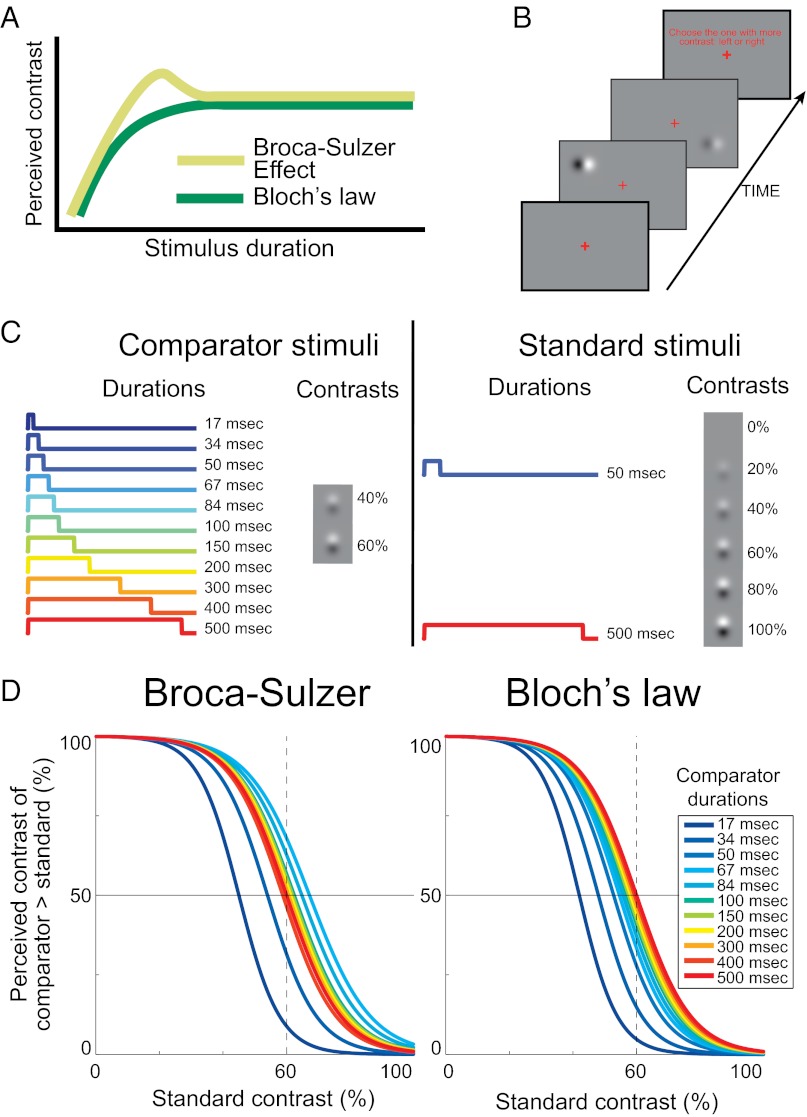Fig. 1.
Experimental design and potential outcomes. (A) Two competing models of temporal vision. Bloch’s law postulates a monotonic increase in perceived contrast with increased duration, whereas the Broca–Sulzer effect postulates a peak in perceived contrast with increased duration. (B) Temporal structure of a trial. Subjects fixated on a central cross, and two Gabor patches flashed in succession on opposite sides of the screen. Following stimulus presentation, subjects reported which Gabor had higher contrast. (C) Physical contrasts and stimulus durations used for the comparator and standard stimuli. In the unblocked experiment, all possible combinations were randomized. In the blocked experiment, the different conditions were grouped into four sequential sets of trials or blocks, each with a constant comparator contrast and standard duration and an internally randomized trial sequence. (D) Psychometric curve models of the two possible experimental outcomes, color-coded for different comparator durations. If contrast perception has a peak, as in the Broca–Sulzer effect, the curves will first shift right and then left as stimulus duration increases. If contrast perception follows Bloch’s law, the curves will shift monotonically to the right.

